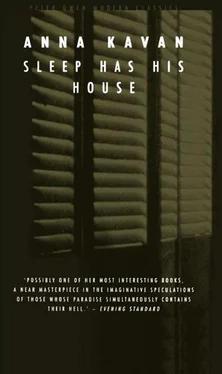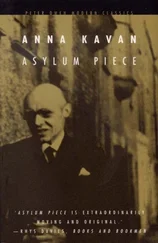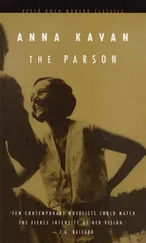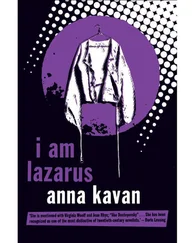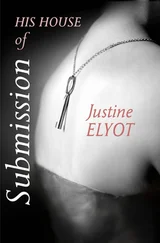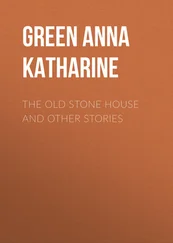Only as regards the ballroom it is necessary to mention the elaborate chandeliers (if that is the right term with which to describe these sparkling crystal confections of ice-bright lights, fantastically crownshaped, and pouring an absolute flood of brilliance upon the scene). It is these amazing illuminations which give the ballroom such a unique distinction; for they are quite unforgettable; and a person who has once seen them is not likely to be much impressed by any other wonder encountered in his travels about the world
which makes all the more surprising the potency of the attraction that draws the girl with the glistening green glass slippers to leave her partner standing thunderstruck immmediately under one of the radiant crowns in order to follow a silhouette darkly beckoning and window-framed in the sapphire recessive night.
And so on: in considerable repetition, with varying detail, of the basic situation; the central theme itself being subject to variation in so far as the attraction is not inevitably to darkness from light.
For instance; the dream travels, quite briefly, through a picture sequence in which each view lasts only just long enough for apperception before it is superseded.
At first there is seen, from some distance away, a small one-storey house near the edge of a forty-foot cliff, at night; it is not very dark. The shut box of the house, with snaky convolutions of surrounding tree-trunks, is at the top of this picture: the rocky cliff face (below it the tarry water) is the crucial centre. Next a glimpse of the interior in which (in bedroom with drawn blinds) an indication is made of someone asleep in bed: the indication further extended to suggest B. Quick shift outside again to the night sky pricked with a few stars. Huge storm-clouds gathering, expanding, immediately eat up the sky and its stars. The sea rising: the heaving sea-mass bursts into white horses; the wind lets fly; the wind pitched so that its noise is too the hissing spray blown from the breakers which now are filling the dream picture. The cliff is black shadow. A wave crashes; against the rocks the waves hurling a deadwhale-deadweight of water; the spray unfurls its enormous fan; the rocks quake amongst rush and lather and foam of retreating water; their stubborn, drowned, again battered, not yet quite smothered heads (did they really tremble?); upthrusting spray jets higher and higher from the successive breakers. Terrific waves swelling; huger, fiercer waves accumulating and exploding: a wave pounds on a balanced rock; the rock lurches with thunder-thud into the seething sea trough: another pounding thunder-roar, and the cliff quivers with tremor of walls in bombardment.
A lightning flash is stabbed into the sky and jabbed at by other flashes, their crazy neons jittering into word shapes, WHAT IS LOST NOW IS OUR HOME IN THIS WORLD. Immediate glimpse of monstrous vicious crocodile snouts thrusting out of the waves and flaming, fire-belching with deafening shattering booming reverberation and blinding eye-thunder (black and fire everywhere); could be warships, submarines, could be leviathans in their death-throes.
Now the cliff, in black-and-white flaps of fire and thunder, bashed and battered by waves and beaten to breaking-point; rocks, a whole buttress, loosen with earthquake rumble, start to slither; a whole segment of the cliff crumbles and falls away, bearing with it a tree, torn-up roots wildly writhing; the house hanging suspended, projecting over the now concave cliff verge, overhanging nothing.
Inside the bedroom, the sleeper has woken. In this dark room a stirring movement, the door opening, someone entering. Hands, frailly phosphorescent, extended, groping, delicately contacting the edges of furniture, feeling their way like blind hands. A blue ring flashes; two hands are joined, one leading the other, and flashing its bright ring; the hands moving through the dark house together, in darkness, out of the house; leaving it:
outside the tumult speeds up, the storm noise getting steadily madder; the flaming monsters vomiting more and more frenziedly, blasting each other; finally wrecked and ruined and sinking, sizzling in sparks and white-hot seethe of lightning and steaming sea:
with deafening roar the entire cliff crumbles, collapses; the house curtseys, sinking forward slowly, turns over, slowly and gracefully disintegrates (walls fall outwards like sides of cardhouse), disappears.
The pandemonium is dimmed quickly into sound of rushing wind; dull, heavy and broken thumping of waves subsiding; then silence.
Two vague figures, one leading the other by the hand, seen receding far off under the quiet night sky where a few watery stars are starting to reappear.
A most remote, primordial scene. A large expanse of mountainous country, no trees, no water, no habitations. Although there are no really high peaks in sight one gets somehow the impression of being at a high altitude, on a plateau among the tops of the mountains. The rock formations are flattish, truncated, the higher tors assuming the shapes of miniature Table Mountains. The colouring a uniform cool lichen-grey.
The sun has just set and the sky is still faintly pink in the west behind a low blurring dust-haze; elsewhere it is a very limpid and unimpassioned shade of delicate lime-green. In the segment of sky opposite the sunset, above the crenellated horizon, a star, at first only just visible, growing momentarily brighter, assumes an elongated shape like a candle-flame. It is at first the only star to be seen: but very soon another, another, and then another, make their appearance. Towards this cross-shaped constellation, across the plateau in the fading light, a procession of vaguely feminine forms moves slowly on foot. The leader raises her hand in encouragement or in exhortation, points to the four stars. So swift is the passing of the subsequent flash that it is impossible to say whether ring or stars originated the light.
The pilgrimage continues to follow the stars which grow larger and brighter, more strangely shaped
until they reveal themselves as candle-flames in a small dark room with no windows or doors visible. The walls are scrawled over with dimly-seen symbols, pentacles, wands, swords, etc. There are shelves of books: a few phantom-glimmering shapes of vases or urns. B sits on the floor, reading by the light of the four candles set in their cross-shaped holder.
The Liaison Officer in his smart uniform is preparing to read out of his book again. There is the impression hanging about the dream that he has just finished a part of his lecture or sermon or whatever it is, and is about to start on something new. This he does, by reading in a clear cold voice which has perhaps grown somewhat more authoritarian in its inflexion.
Many people have said that retreats are undesirable and that they should be abolished because their existence constitutes a threat to the supremacy of the authorities whose powers ought to be absolute. But when a man says that he is going into retreat it does not mean he is evading the law, which is an impossibility anyhow: it means that he is effecting a change of authority, a transfer from one set of laws to another set at least equally mysterious and severe — so that he is certainly not making an escape of any sort. All that these retreats do is afford an alternative code, no less exacting and quite as incomprehensible as the one held in more general observance. But when it comes to the attitude of the authorities towards such institutions — here, I think, we are getting out of our depth.
In this connection it could be argued: if the authorities really are supreme, why should they permit the continued existence of a system which competes with their own? Is it not much more likely that the retreats are licensed by the authorities because, in some inscrutable way, they play their part in the established order?
Читать дальше
